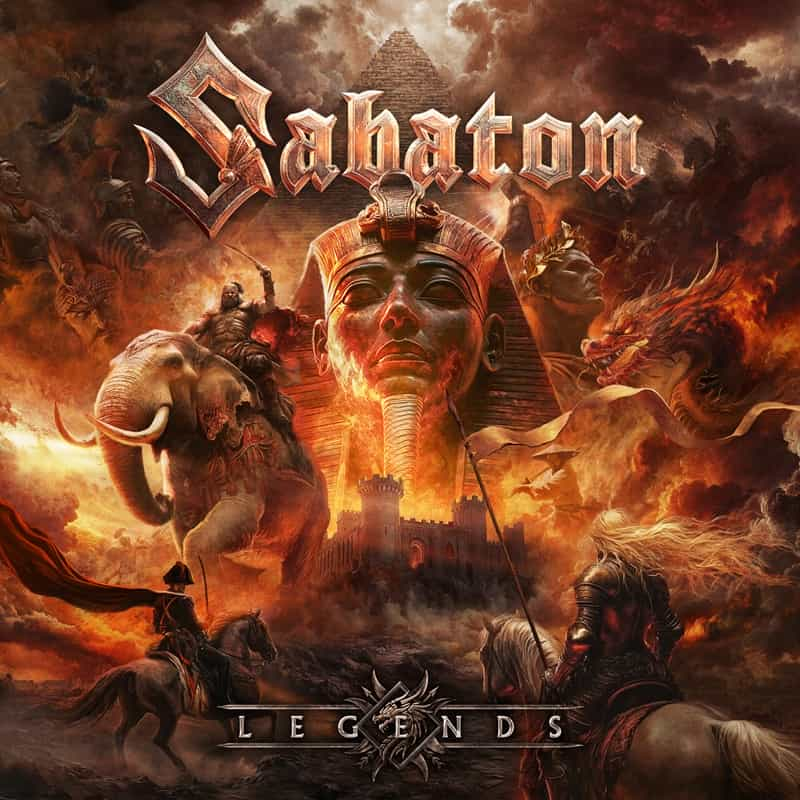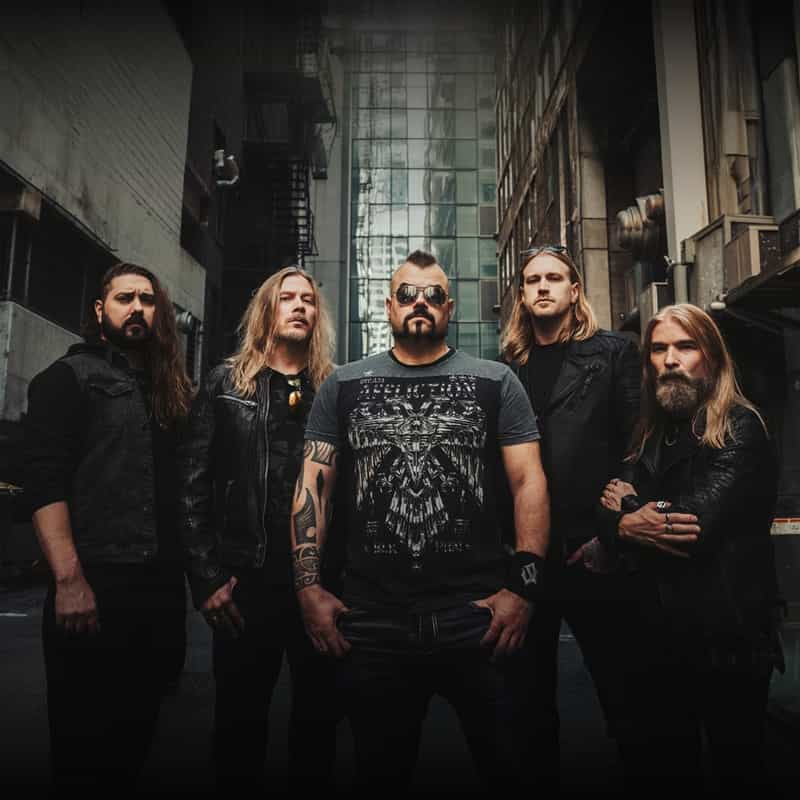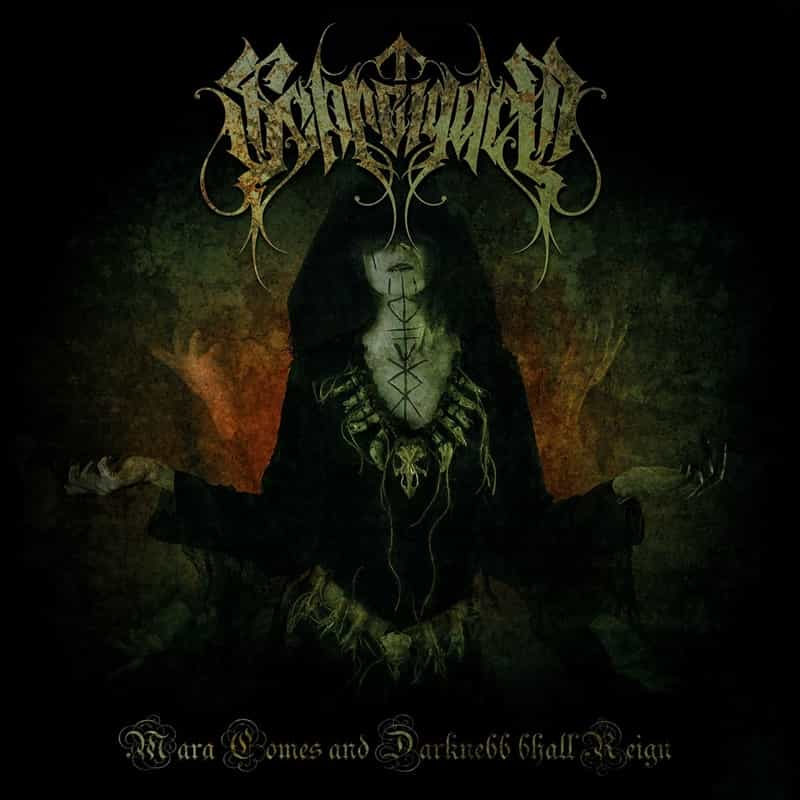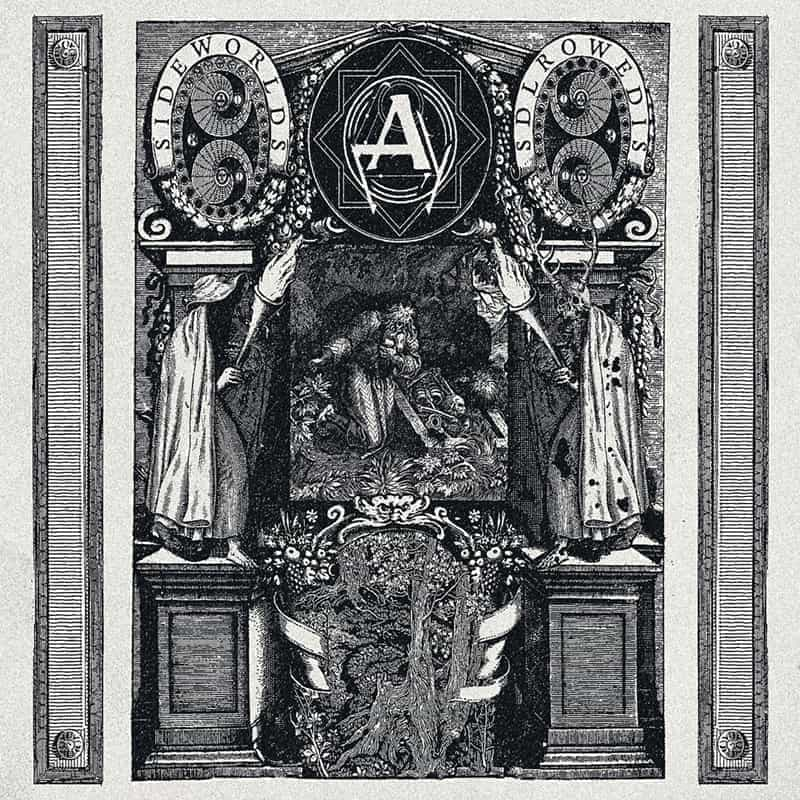Single Review: Sabaton – The Duelist for #METALMOMENTUM

Band: Sabaton
Title: The Duelist (Single)
Country: Sweden
Label: Better Noise Music
Release Date: July 25th, 2025
Format Reviewed: High Quality Digital Recording

Single Review: Sabaton – The Duelist for #METALMOMENTUM via Better Noise Music by Elyna
Sabaton returns with The Duelist, a powerful single previewing their upcoming album Legends (October 17, 2025). Featuring four historical anthems about Miyamoto Musashi, Hannibal Barca, Genghis Khan, and theTemplars, it masterfully blends history and power metal. by Elyna Steel
Swedish masters Sabaton are back. Two years after the release of “The War to End All Wars,” Sabaton is in the midst of promoting their eleventh studio album, entitled “Legends,” which is scheduled for release on October 17, 2025 via the Better Noise Music label.
As a preview of this highly anticipated album, the band has released a set of four singles that, together, make up the promotional EP “The Duelist.” This EP consists of “Templars,” released on April 25, 2025, “Hordes of Khan,” released on June 6, 2025, and a double release consisting of “The Duelist” and “Lightning at the Gates,” both released on July 25, 2025.
Going straight to the point, let’s take a closer look at EP “The Duelist.” First of all, and as it has been Sabaton’s tonic since their beginnings, there is the exquisite and masterful fusion of history with power metal in vein, which is already a trademark of these Swedish warriors. In this work, the band pays tribute to four historical and archetypal characters: Miyamoto Musashi, Hannibal Barca, Genghis Khan and the Knights Templar.
“The Duelist” is the opening cut, inspired by the life of the mythical Japanese samurai Miyamoto Musashi. Renowned for his ability to fight with two swords, for having won more than 60 duels, and for his dedication to the “way of the warrior,” Musashi is an icon of Japanese culture. He believed in and promoted spirituality in fighting, making it a harmonious and balanced dance. The song also mentions the five elements of “The Book of Five Rings”: Earth, Water, Fire, Wind and Emptiness, pillars of Musashi’s philosophical treatise. These five elements represent balance, adaptability, discernment and mental acuity, principles that guide the warrior on his path and make him invincible, honored, feared and respected by all, even by his enemies in battle. All this is, ultimately, the root of a true samurai.
Thus, “The Duelist” highlights Ronin’s journey from child to legend, his training and his life choice to walk the path of the Warrior. It also reflects the syncretism between martial prowess and spiritual and philosophical wisdom, represented in the figure of Musashi as a symbol of discipline and the balance between war and spirit.
Musically, I consider “The Duelist” as one of Sabaton’s most impressive songs. Brutally epic, it is structured in a steady 4/4 time signature and presents a medium-fast martial rhythm. A remarkable and very attractive element are the rhythmic syncopations, which follow one after the other throughout the song, enriching the proposal whose base is the NWOBHM. These capture the listener’s attention—in fact, they are spellbinding—and give a sensation of constant movement. In a musical context like Sabaton, which combines history, war and metal, the choice of this rhythmic pattern is a smart and strategic move because it adds energy, drama, dynamism and coherence to the lyrical narrative. It’s as if the drum beats, guitar attacks, and orchestration mirror Musashi’s sword dance in a vivid way.
The polyphonic choirs and voices feature precise, furiously powerful phrasing, reinforcing the atmosphere of grandeur and solemnity. With an almost cinematic tinge, the choirs feel like an echo of the honorable samurai duel. The harmonies intertwine fluidly, contributing not only to the emotional impact but elevating the story, almost as if they were the voice of Musashi himself resonating and summoning us from arcane times.
As for the riffs, they display surgical precision, combining elegance, power and depth. They don’t just fill in; they are a key part in the sonic construction of the story. The syncopations appear again in the accents and abrupt cuts, which break the scheme of classic heavy metal continuity and project a musical imagery that portrays the strategic movements of the duelist.
For its part, the exquisite guitar solo is a climax of emotion and technical virtuosity, in an old-school/modern combination that brought back strong memories of Iron Maiden and Judas Priest, fused with the luminous intensity of virtuosos like Steve Vai and Joe Satriani. This technical display highlights the emotion and tension of the combat, thanks to its fast ascending phrases and other more melodic ones. The subtle vibrato gives it a very expressive character, as if the guitar had a voice of its own.
In short, “The Duelist” not only stands out for its beautiful narrative, but for the way in which each melodic element enhances the story. Sabaton here was inspired by the spirit of the legendary samurai to give life to a wonderful piece, where every note, every measure, every rich syncopation and every vocal attack contributes to draw the portrait of a warrior who transcends the traps of time and oblivion.
“Lightning at the Gates” is the second track. It tells the story of one of the greatest military strategists of all time: the Carthaginian general Hannibal Barca. He is remembered for leading an intrepid invasion of Italy from his native Iberia, which took him across the Alps with his army and 37 war elephants.
Barca achieved great victories in the regions of Lake Trasimeno and the Trebia River in Italy. But the victory that catapulted him to the level of legend was the battle of Cannae in 216 BC, where he used an attack strategy never seen before in history: the double envelopment. This consisted of surrounding and breaking a large legion of Roman soldiers, with his central infantry retreating little by little to contain the adversaries while his cavalry surrounded them from the sides, attacking from the rear, managing to encircle them. This masterful tactic is still studied by modern strategists and was even put into practice by the Roman army of that time, some time after that historic battle.
The lyric evokes a glorious march that is likened to a thunderclap shaking Rome, paying tribute to Barca’s determination and tactical intelligence, presenting him as a military genius, and his army as a storm that threatens and destroys. Long story short, “Lightning at the Gates” celebrates Hannibal Barca’s audacity, vision and leadership skills, honoring him as an immortal figure.
Musically, “Lightning at the Gates” is a beautiful display of Sabaton’s genius at combining historical lyrics with organic melodies—the entire EP is, in all honesty. It features a medium tempo close to Allegro, which envelops you in an intense martial vibe, masterfully managing to convey the excitement and feeling of marching through the icy wilderness of the Alps, following the orders of General Barca. It starts with orchestrations and riffs that evoke the moment before starting the march, with Scorpions dyes the first seconds and then a Hammerfall aura, which converges with Sabaton’s voice, achieving an intense epic fusion.
Finally, it is worth mentioning the integrative and essential role of the bass in this track—and in all Sabaton’s songs, besides those that compose “The Duelist.” Together with the drums, the bass sounds like a war drum, as if they were the footsteps of Hannibal’s 37 elephants as they cross the cold peaks of the Alps, marking the advance with a grave and powerful cadence.
To sum up, “Lightning at the Gates” is the vivid sonic and lyrical image of a historical moment, where the strategic genius of a Northern general marks a before and after in terms of battle tactics. And not only that. It is also a sample of the magic of Sabaton, who are able to transform the historical memory and the exploits of the heroes of yesteryear into incredible timeless hymns that transcend the ages.
What follows is the sublime “Hordes of Khan,” my absolute favorite of the EP. The central theme deals with the expansion of the Mongol Empire by the mythical general Genghis Khan. The relentless strength and brutality of Khan’s hordes is portrayed here as ravaging everything in their path, mercilessly killing anyone who opposed their rule. Due to their unrestricted obedience to Khan and their cohesion as a whole, they are represented as a true machine of war, death and domination.
Sabaton not only wanted to speak of Khan as that fierce and powerful conqueror, but as a complex character whose immense legacy—creating the largest contiguous empire in the history of mankind—not only made him a legend, but ensured his influence continued to grow. Even today, Khan’s influence is immense and can be seen through his military, political, cultural, commercial, and even genetic legacy, leaving visible traces in modern strategy, Mongolian national identity, and global history.
For “Hordes of Khan,” Sabaton created an incredible music video set in a future where wars and heavy metal no longer exist. A little girl discovers a Sabaton exhibit in a museum. Playing the instruments produces a magical moment that revives the band as legendary warriors who must prevent the spirit of Khan from escaping and restarting the conquest of the world.
“Hordes of Khan” is structured in a steady 4/4 time signature and a galloping-marching rhythm that grips from the first note, vividly conveying the image of the Mongolian army riding at full speed, almost poetically.
The palm-mute style riffs throughout, the syncopated attacks in the pre-choruses and bridges, and the exquisite pickings and slides are an elegant and powerful mat, which further reinforces the epic-historical vibe of the track, adding layers and layers of depth and impact. It literally makes your hair stand on end.
The solo is a sublime moment within the piece. The beloved syncopations continue to appear, providing a sense of ascent and triumph. Meanwhile, the two-part harmonies, the fierce and fast slides and pickings, and the spectacular sweep towards the end of the solo create a climax worthy of legend, an intense epic moment full of nuances and textures that closes the solo in a spectacular way.
As for the vocals on the verses, they are tight and low. They alternate with moments where there is no guitar, with others that do. This melodic interplay reinforces the idea of “voice from the past”; with no guitar, the voice feels imposing, solemn, as if Genghis Khan himself were giving a powerful speech before the march. In the choruses, harmonic voices set the pulse with a martial cadence that heightens the intensity. The vocal performance conveys authority and strength, facing the warlike and majestic character of the song.
Thus, “Hordes of Khan” is a brutal cut in the broadest sense of the word. Not only for the deep lyrical narrative but also for the incendiary power of its melody, which transports you to the Mongolian army to be part of the creation of the Empire. “Hordes of Khan” is not only listened to; it is lived.

And closing this powerful compendium anticipating the epic that comes with “Legends,” appears the exciting “Templars.” There is no doubt who it pays tribute to: the Knights Templar, the legendary military order of warriors that had its heyday in the twelfth century. The song portrays them as admirable, fierce in defending their mission and the Catholic faith. They symbolize those who are chosen by God to fight in his name, living an upright and blameless life in the eyes of the people, according to the foundations of the Order. Finally, and after more than two hundred years of existence, the Templars fell due to internal greed and betrayal by Pope Clement V and King Philip IV. Persecuted, captured, imprisoned, tortured and finally excommunicated or executed, the remembered Knights Templar ceased to exist. But their legend and legacy transcended the ages, and continue to inspire new generations as an example of honor, loyalty and sacrifice.
In the meantime, it is complex to define what “Templars’” music provoked in me: jumping, vibrating, feeling mighty, cinematic mood, industrial-dramatic party-like ambience? Maybe all at once! It’s the most operatic and “danceable” song on the album.
Structured in a 4/4 time signature with a half marching tempo, it unfolds over an imposing rhythmic base of epic and military vibe so brutal that it awakens the impulse to rush to defend the faith together with your Templar brothers on the spot!
The orchestrations, which show nods to brit pop and goth, develop in perfect balance with the overwhelming power metal force. And, as a trademark, Sabaton-style vocals and backing vocals appear: polyphonic, dramatic, theatrical and full of dynamism. Far from being just another element, the vocals and backing vocals are the undisputed protagonists of “Templars,” adding layers of power, depth, strength, elegance, and above all, epic magic to the whole.
Likewise, the guitars appear serious, like a canvas where the orchestrations unfold, but the riff that precedes the intense and brilliant solo vibrates with a strange ancestral sensuality, almost arabesque. Thus, the guitars as a whole not only set the pace, but become a bridge between the earthly and the sacred, between the human and the divine. Together, these elements make “Templars” the perfect finishing touch to “The Duelist,” a wonderful preview of what is to come with “Legends.”
Incidentally, and although it is true that “The Duelist” was not my first encounter with the band, this work became “my baptism” in Sabaton, marking my starting point as a fan. It is the work that opened my eyes, ears and mind to understand the greatness of these Swedish masters. With “The Duelist” I managed to understand why they are great. The mastery, the depth, the excellence and the epicness of Sabaton that until today I had only briefly glimpsed was revealed to me as an impressive historical log that, together with the power metal made in the Swedish style, made me feel part of every battle, every story and every triumph. With “The Duelist” I understood, at last, what Sabaton’s true epic means, and that’s why it will always be my starting point. 10/10
Band
Site
Facebook
Instagram
Twitter
VK
YouTube
Spotify
Music Apple
Deezer
Music Amazon
Soundcloud
Label
Site
YouTube
Facebook
Twitter
Instagram
TikTok
Spotify
Bandcamp
Music Apple
10/10 Immortal Classic
**Please support the underground! It’s vital to the future of our genre**
#WeAreBlessedAltarZine
#TheZineSupportingTheUnderground

